South America 2014
Travel, see the world, that's what I want to do! Whenever I hear or read something
about pretty much any place on Earth, I want to go there and have a look. Internet, Google Earth, Streetview, they're all great, but they can't beat being there,
speaking to the locals, getting a taste of the place. Hence the domain of this
blog: See for myself!
From May to November 2014, Eric and I are traveling around South America. We are
starting in Colombia, and gradually working our way South, hoping to get to Patagonia by the time spring arrives there.
I hope you enjoy reading about our travels. Welcome to my blog!
This blog in Dutch / lees dit in het Nederlands
2011 - 2014 California blogs (Dutch only)
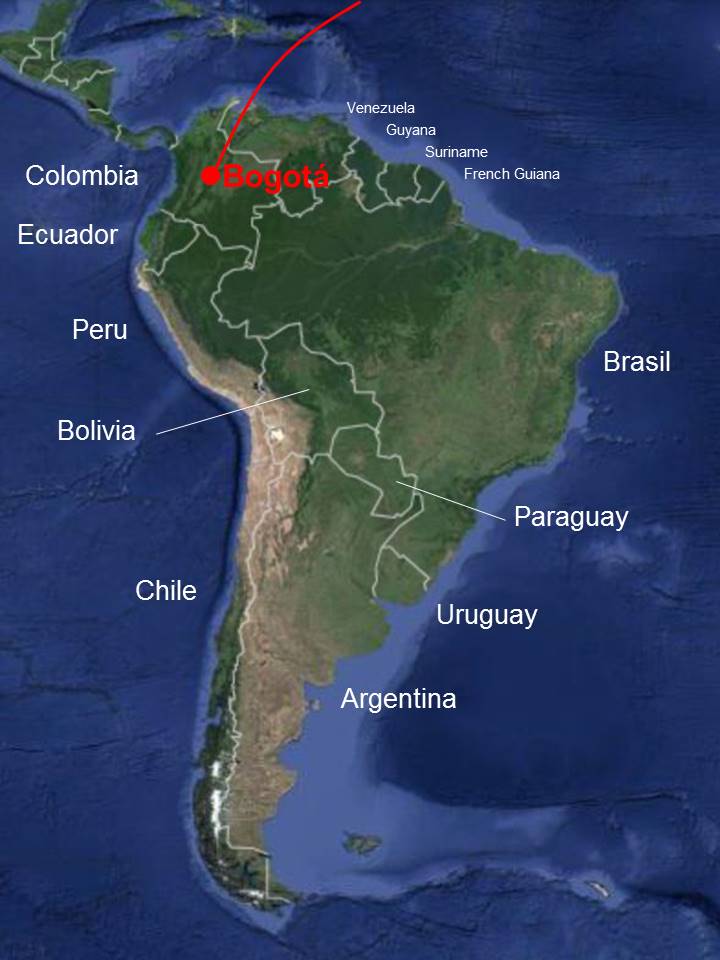
We arrived in Bogotá, Colombia, on May 10th, 2014.
On May 14th we traveled to Medellín, Colombia.
On May 22nd we traveled to Taganga, Colombia.
The Caribbean Sea was shiny and flat, with tiny waves lapping softly on
the beach. Children played in the water, shouting at each other, and
their parents threw them no more than an occasional unconcerned glance.
A series of hollow pops sounded as a couple playing beach tennis hit
a long streak. The sun was already moving down toward the dusty brown
hills behind me, and the worst of the scorching midday heat was over,
but it was still uncomfortably hot. From the wooden lounge chairs
ahead of us, painted red, yellow, and blue, in the colors of the
Colombian flag, a barefoot teenager sauntered over. He asked us if we
wanted to rent two of them. I shook my head. We had already found what
we were looking for. Underneath one of the very few trees on the beach
lay a dead tree trunk, bleached white, worn smooth, and - remarkably
- not claimed by anybody. Eric whipped off his shirt and headed for
the water, while I sat down, one hand on Eric’s shirt to keep it from
blowing away in the hot, dry breeze.
Eric hadn’t even reached the waterline when I saw a man come over,
trudging through the soft sand. He sat down on the tree trunk, about
a meter and a half away from me. I glanced over and nodded politely.
He was very dark brown and had a pot belly. A rim of short grey hair
circled his bald pate, and he had a small grey moustache. He wore
white swimming trunks, and he was dripping wet. Wiping seawater off
his face, he stared at me with undisguised curiosity. Then he smiled
and asked me in Spanish where I was from.
I was tired and hot, and not in the mood for conversation, so I
pretended I didn’t understand. “No Español,” I said with an
apologetic shrug, and turned away.
“Where are you from?” he asked in crystal-clear English, albeit with
a thick accent.
I smiled but didn’t say anything.
“USA?” he asked, and I shook my head. “Germany? England? France?” I
shook my head again. “Olanda?”
I nodded ever so slightly.
“Aaaahhh, Olanda!” He grinned from ear to ear.
I couldn’t help but smile in return. “Is that good?” I asked.
“Oh, yesss! Olanda, wonderful country!” His small black eyes shone
with pleasure.
“Have you ever been there?” I strongly dislike how some people have
firm opinions of countries they have never visited, and I suspected
this might be the case here.
“Oh, yesss! I visit Olanda many times!”
“Really? How co-”
“Rotterdam, Delft, Amsterdam, Utrecht, Enschede...” He trailed off,
but before I could speak, he continued, “Venlo, Maastricht, Breda.
Where are you from?”
“Eindhoven.”
“Ah, Eindhoven! I was there. In the South.”
I turned slightly on the tree trunk, to face him. “Why were-”
“Sometimes I stayed several months,” he said, cutting me off. “I
stayed with my friend, Jan, in Dordrecht. A wonderful man. The people
from Olanda, they are so kind. From there, I visited many other
countries. Denmark, Germany, Belgium, France, Austria…” He wiped a
drop of water off his cheek.
“So how come you-”
“Italy, Spain, England, Luxemburg, Sweden… But the people of Olanda,
they are the best. My wife, I even took her with me one time, to see
for herself.”
I waited for him to continue.
“I was expert of Jim,” he said, and he leaned back and nodded
proudly.
“Jim?” I looked at him in confusion.
“Stone. Jim.” He pursed his lips and nodded again.
I gave him a blank look.
“Like jewel.”
“Gems!” I chuckled.
The man nodded curtly. “I was good at estimating the price. The
first time, I went to Antwerp, but my flight was to Amsterdam, so
first I visit Olanda. I had never been outside of Colombia before.
It was a great time.” He turned away from me and gazed out over the
smooth Caribbean Sea.
I took a swig from my water bottle and waited patiently.
Finally he turned back to me. “The people I worked with in Europe,
the Jim people, got me into the business.” He gave me a
pointed look, with one raised eyebrow, and continued. “They saw
that I was smart. I am very good at strategic thinking,” he said,
and he grinned and tapped his forehead with his index finger.
“And they knew I was safe. I could be trusted with Jim, so I could
be trusted with money. Big money.”
I looked at him, searching his face, wondering what he was
talking about.
“I was good at it,” he continued. “I became the best. I became
very rich.”
From the corner of my eye I saw Eric walking up the beach. I
cleared my throat. “I’m sorry,” I said, “but I’m not sure I
understand. How did you become rich? From selling gems?”
“No!” He laughed. “The money was from cocaine.”
I blinked rapidly. “You- you smuggled cocaine?”
“Only money.”
“To Europe?”
He laughed heartily, his paunch shaking. “To Colombia of
course!”
“So you smuggled drug money back to Colombia?” I asked
incredulously.
“Smuggling, sometimes. I already said, I am good at strategy.”
He grinned at me. “There are other ways. Better ways.”
Eric arrived at the tree trunk and grabbed his shirt, smiling
politely at the man. “Do you want to head on back to Taganga?”
he asked me in Dutch.
I replied in English, “I was just talking to this gentleman.”
Shifting over on the tree trunk to make room for Eric, I
added, “Why don’t we stay for a few more minutes?”
Eric looked curiously at me, but sat down. I introduced Eric and
myself, and the gem expert said his name was Nelson
López.
“Nelson has visited the Netherlands many times,” I said to Eric,
hoping to pull the conversation back afloat. And he’s a top dude
in international cocaine traficking and filling me in on the
details, I wanted to add, but I wasn’t sure how to work that
in. Turning back to Nelson, I said, “Are you going back to Olanda
soon?”
“Oh, no.” Nelson shook his head. “I don’t do this anymore.” He ran
his right hand down his left arm, stripping off drops of water, and
then ran his left hand down his right arm. “I was doing very well,”
he continued. “Very, very well. Making a lot of money. I could have
bought one of those.” He waved his hand casually toward the other
end of the bay, where a huge pleasure yacht lay at anchor. “I could
have bought anything I wanted to. But I stopped.”
“Why?”
“It was God.” He looked straight at me, his eyes bright, waiting
for my reaction.
“God?”
“God told me to change.”
“He spoke to you?” I asked. “Like in a vision or something?”
“Yes. I said to God, I am not a religious man, I don’t have anything
to do with the church. But God, He said, ‘I am claiming you now.’ He
showed me two rooms.” Nelson lifted his arm and sketched two
rectangles in the air. “One room was full of boxes of cash. Dollars.
It was a big room, maybe five meters by five meters, and the boxes
were up to the ceiling. It was a lot, a lot of money.” He paused
and grinned at me, his eyes sparkling.
I asked the obvious question. “What was in the other room?”
“A bible.”
“Just a bible?”
“Yes, only one bible. On the floor. The first room had billions
of dollars, the second just one book. And God made me choose.”
I nodded, prompting him to continue.
“God was giving me an important message. He was telling me that I
was living a bad life, but I could still change. He wanted me to
change, but it was my choice. So I changed. I chose the second room,
with the bible, and I stopped with the business.”
“The other people in the… business, did they let you leave? I thought
that was impossible.”
Nelson shrugged. “I made the decision to leave, so I left. Now, I
am a Pastor.”
“A Pastor!” I chuckled. “That’s quite a change! In Taganga?”
“No, in Santa Marta. Taganga is no good, too many drugs. I am
different now, I want to stay away from drugs.” Nelson frowned. “One
time, when I was a Pastor for seven years, an old friend came to
talk to me. He said, ‘Nelson, please help us one time. Just one more
time.’ But I said no.”
“What did he want you to do? Smuggle more drugs money back to
Colombia?”
That last sentence was largely for Eric’s benefit. He had been
listening to us in silence, no doubt trying to figure out what we
were talking about, and I suppressed a chuckle when I saw his eyes
widen.
“Yes. There was a lot of money in Italy. They wanted me to move it here.
I would get twenty percent of the total.” He pointed at the yacht
out in the bay. “Enough to buy that, two of them. It was tempting,
but I knew right away that it was a test from God, so it was very
easy for me to say no. And my friend, a year later he also stopped
with the business. Now he comes to my church.”
I nodded, smiling.
“Now my life is calm. I live in Santa Marta. Sometimes I come here,
for the beach. Sometimes I go to Bogotá because two of my children
live there. I have five children, fifteen grandchildren, and two
great-grandchildren.” He grinned widely. “I am a poor man, but I am
living a good life.”
“That’s great,” I said.
Suddenly Nelson got to his feet and placed his hands in his sides.
He squinted up at the sun and then turned to us. “Okay,” he said,
extending his right hand. “I am going to swim, and then I am
going back to Santa Marta.”
Eric and I also got up, and we shook hands.
“Enjoy your travels in Colombia! Bye!” Nelson turned on his heels
and headed toward the water.
We stared after him, speechless, watching as he stepped into
the tiny waves that lapped softly on the beach.
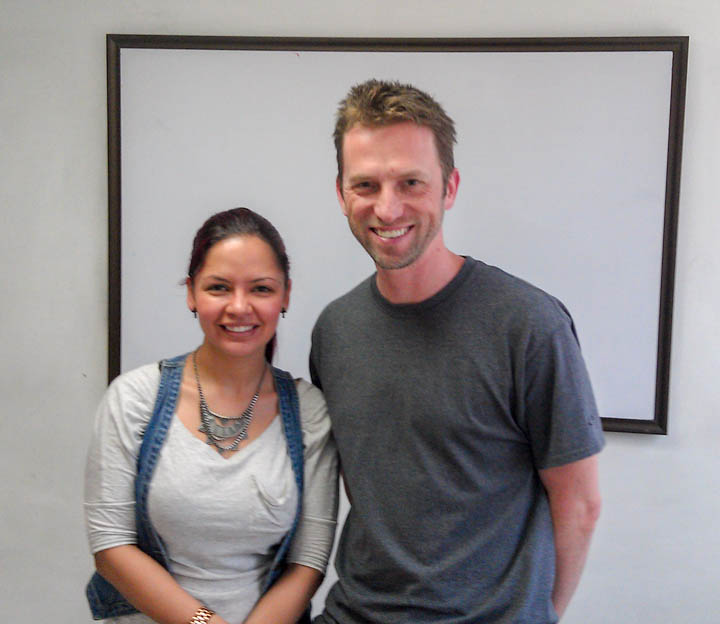 After a few days in Bogotá, we flew to Medellín, the
second largest city in Colombia, with 2.5 million inhabitants. For
backpackers who need to watch their spendings, flying may not sound
like the right way to travel. However, taking a bus from Bogotá
to Medellín costs about $50 and takes 10 hours, whereas flying
costs $60 and takes an hour and a half. We did the math.
After a few days in Bogotá, we flew to Medellín, the
second largest city in Colombia, with 2.5 million inhabitants. For
backpackers who need to watch their spendings, flying may not sound
like the right way to travel. However, taking a bus from Bogotá
to Medellín costs about $50 and takes 10 hours, whereas flying
costs $60 and takes an hour and a half. We did the math.
We came to Medellín to take a Spanish course. On Thursday and
Friday mornings, at the ungodly hour of 7:30, Eric and I sped down the
hill on foot, from our apartment to the language school. By eight
o’clock, we were both sweating away in class; it was around 32
oC during the day, the classrooms were not air-conditioned,
and the windows could not be opened because of the traffic noise.
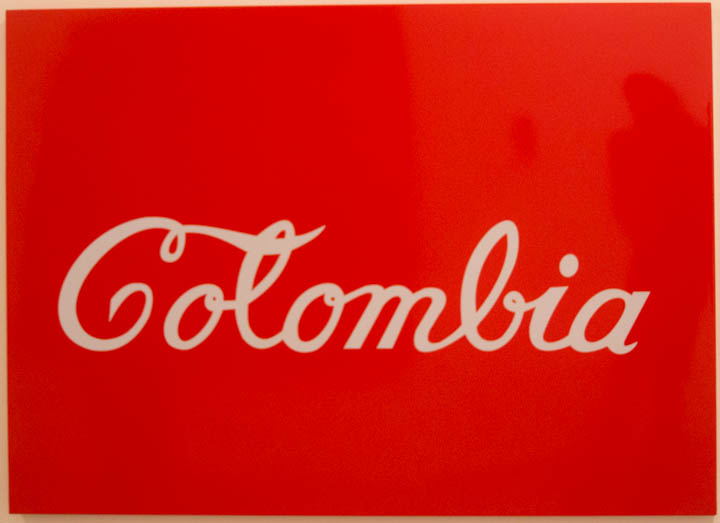 Eric learned basic Spanish from Lorraine, and I had
conversacións with Leidy and grammar from Gloria. We were
done at noon, after which we had a simple set lunch at a nearby
restaurant and then trudged back up the hill to our apartment, to
spend the rest of the afternoon studying.
Eric learned basic Spanish from Lorraine, and I had
conversacións with Leidy and grammar from Gloria. We were
done at noon, after which we had a simple set lunch at a nearby
restaurant and then trudged back up the hill to our apartment, to
spend the rest of the afternoon studying.
On Saturday we visited the museum of Antioquia (the Colombian state of
which Medellín is the capital), and walked around the downtown
area. On Sunday we took one of the new cable-cars up into the hills.
These cable-cars are part of the metro system, and they give the
inhabitants of the poorer neighborhoods, up on the steep slopes, easy
and cheap access to the city.
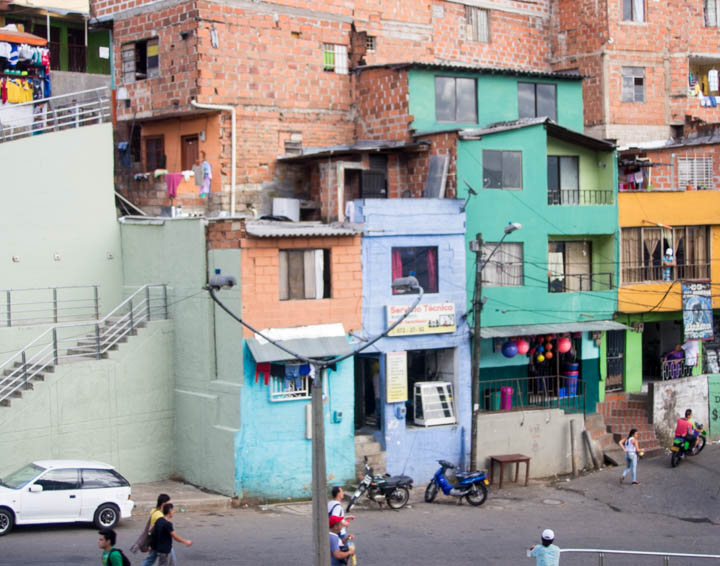 We walked back down to the city through
one of those poor neighborhoods.It was fascinating to see how life
here is focused entirely on the street - everyone was outside, sitting
in doorways or on curbs, chatting to neighbors. I’m not sure that
walking here as a tourist is advisable, but we never felt
threatened.
We walked back down to the city through
one of those poor neighborhoods.It was fascinating to see how life
here is focused entirely on the street - everyone was outside, sitting
in doorways or on curbs, chatting to neighbors. I’m not sure that
walking here as a tourist is advisable, but we never felt
threatened.
From Monday through Wednesday we were back in class; Eric with
Nathalie, and I with Leidy. Our classes were now in the afternoon,
from 1 - 5 pm, which meant we spent our evenings and mornings doing
homework. The classes were fun; I learned a lot of Spanish, but I
especially enjoyed learning about Colombia and its inhabitants
through my teachers.
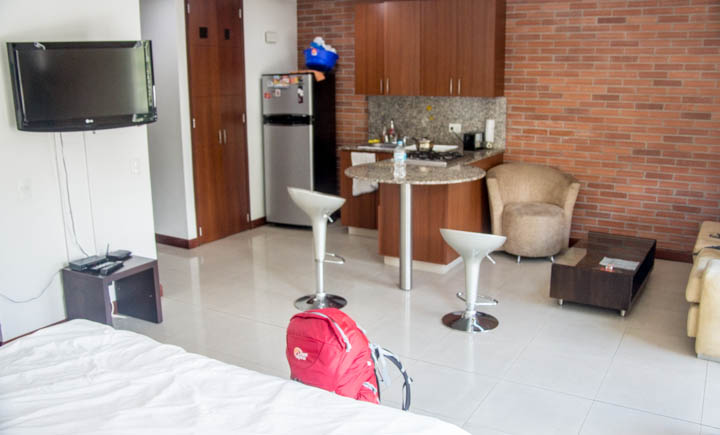 Central Medellín has a lot to offer, but we stayed in the hip,
up-and-coming neighborhood of El Poblado. There are plenty of
restaurants and bars here, our language school was here, and it’s
safer than the center. We rented a furnished apartment. It cost roughly
the same as a hotel room, but it was much roomier and gave us the
opportunity to prepare our own meals and do laundry.
Central Medellín has a lot to offer, but we stayed in the hip,
up-and-coming neighborhood of El Poblado. There are plenty of
restaurants and bars here, our language school was here, and it’s
safer than the center. We rented a furnished apartment. It cost roughly
the same as a hotel room, but it was much roomier and gave us the
opportunity to prepare our own meals and do laundry.
May 14: arrival in Medellín, by Avianca Airlines from
Bogotá, Colombia
May 22: departure by Avianca Airlines, to Santa Marta, Colombia
The state of Antioquia is one of Colombia’s wealthiest.
Paisas, as its inhabitants are called, are said to work
hard and to be hospitable. And they’re proud of their land.
Coffee plantations and lush forests grow side by side in the fertile
soil. “Sow pebbles there, and you’ll harvest rocks,” Andres claimed
with a proud grin. We met him in the Amazon region, where he was a
tuk-tuk driver, saving up every penny to return home. Antioquia’s
capital is Medellín, Colombia’s second city, thriving and
bustling. Tall concrete buildings line the churning Medellín
River, while low-level residential neighborhoods cover the hillsides.
Medellín, nicknamed City of Eternal Spring because of its
pleasant climate, has quite a reputation: the women in this city are
said to be the most beautiful in the world.
 Medellín is also one of the best cities in northern South
America to take a Spanish course, and, with over five months in South
America ahead of us, Eric and I were in serious need of just that. As
my Spanish was better than Eric’s, they put us into two different
classes. I watched a smiling Eric follow Lorraine’s swaying hips into
a classroom, and then started my own class with Leidy. Leidy, a bright
young woman who has a university degree in Spanish literature, but
speaks virtually no English, threw me in at the deep end. After two
hours of profuse sweating (Eternal Spring must be warm) and a
conversación class on religion and poverty in Colombia
- in Spanish! - I was ready to drop.
Medellín is also one of the best cities in northern South
America to take a Spanish course, and, with over five months in South
America ahead of us, Eric and I were in serious need of just that. As
my Spanish was better than Eric’s, they put us into two different
classes. I watched a smiling Eric follow Lorraine’s swaying hips into
a classroom, and then started my own class with Leidy. Leidy, a bright
young woman who has a university degree in Spanish literature, but
speaks virtually no English, threw me in at the deep end. After two
hours of profuse sweating (Eternal Spring must be warm) and a
conversación class on religion and poverty in Colombia
- in Spanish! - I was ready to drop.
“Are you from a wealthy family?” I asked, fighting to keep my eyelids
open and my eyes focused on Leidy’s freckled face. This may sound like
a bold question, but we had been discussing the lack of opportunities
for education for the poor, and Leidy had just told me about her
university education.
Leidy picked some lint off the sleeve of her blue language school polo
shirt before she turned to me. “No, my mother’s family is poor,” she
answered, “but the government paid for my education.” Looking straight
at me without blinking, her face expressionless, she continued,
“Because my father was asesinado while working for the
government.”
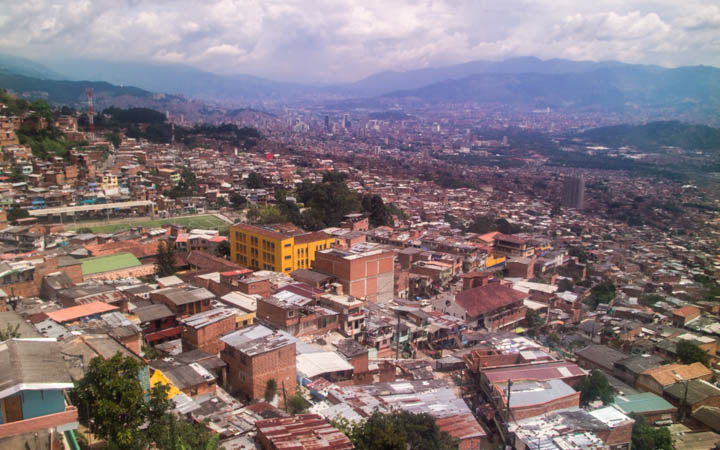 That sounded an awful lot like asassinated. “Asesinado?” I repeated,
checking to see if I’d heard right.
That sounded an awful lot like asassinated. “Asesinado?” I repeated,
checking to see if I’d heard right.
Leidy nodded. She then told me that her father had been a bodyguard
to a politician. He had been good at his job, and had prevented
several attacks on the politician’s life. Criminals accosted him, and
told him to butt out. He didn’t. They threatened him, and he ignored
them. And then one day they abducted him, took him out into a field,
forced him to kneel, and shot him in the neck. They were members of
the Medellín Cartel. This was in 1992. Leidy was three years
old.
Yes, Medellín has a bit of a reputation, and in most of the
world it’s not for its beautiful women. Instead, people know the name
of this city because of the infamous Medellín drug cartel, run
by Pablo Escobar. In the late 1980’s and early 1990’s, Escobar and his
gang turned their hometown into the most violent city in the world.
In 1991, the homicide rate was 380 per 100,000 inhabitants, per year.
In comparison, this rate is close to 5 for the USA, and 1 for countries
in Western Europe. As there were roughly 1.6 million inhabitants in
Medellín at that time, this translates to more than 6000 murders
per year, or 17 per day. Leidy’s father was just one of depressingly
many.
 Luckily, violence in Medellín has been on a steady decline in
the past ten years, and the city is doing very well. After the Pajaro
de Paz (Bird of Peace) sculpture by Medellín-born Fernando
Botero was blown apart, killing twenty-three, Botero did not bow to the
criminals (read my blog on
Botero).
Instead, he insisted that the remains of the blown-up bird
be left where they are, and he placed a new bird next to it, as an
“homage to stupidity.” That reaction appears to be typical for the way
the city’s inhabitants are dealing with their bloody past: look it in
the eye, acknowledge it, and move on. The mayor has called on his
citizens to learn English, to facilitate the increasing number of
foreign visitors. Creative recycling solutions, such as the use of
discarded soda bottles to build low-income housing, have drawn
world-wide attention, and a brand-new metro system, including cable
cars that reach up into the poor neighborhoods in the hills, won the
city the title of
Most Innovative City
in 2013. When speaking with the locals, it’s hard not to become
infected with their enthusiasm, their faith in a bright future, and
their eagerness to work hard to achieve it.
Luckily, violence in Medellín has been on a steady decline in
the past ten years, and the city is doing very well. After the Pajaro
de Paz (Bird of Peace) sculpture by Medellín-born Fernando
Botero was blown apart, killing twenty-three, Botero did not bow to the
criminals (read my blog on
Botero).
Instead, he insisted that the remains of the blown-up bird
be left where they are, and he placed a new bird next to it, as an
“homage to stupidity.” That reaction appears to be typical for the way
the city’s inhabitants are dealing with their bloody past: look it in
the eye, acknowledge it, and move on. The mayor has called on his
citizens to learn English, to facilitate the increasing number of
foreign visitors. Creative recycling solutions, such as the use of
discarded soda bottles to build low-income housing, have drawn
world-wide attention, and a brand-new metro system, including cable
cars that reach up into the poor neighborhoods in the hills, won the
city the title of
Most Innovative City
in 2013. When speaking with the locals, it’s hard not to become
infected with their enthusiasm, their faith in a bright future, and
their eagerness to work hard to achieve it.
“I know who they are,” Leidy said, back in Spanish class after the
weekend. “The men who killed my father. There were two of them. I know
their names, and I know what jail they’re in.” Her brown eyes were
hard and unblinking. “There is nothing I’d rather do than murder them.
Pay somebody to kill them in jail.”
I didn’t speak.
“But you know what?” Leidy shook her head. “I’m not going to do
that.”
I nodded, encouraging her to go on.
She leaned forward and spoke intently, her eyes suddenly bright.
“What I am going to do, one of these days, is go to the jail and visit
them. At first, I won’t tell them who I am. I’ll wear my best clothes.
I’ll tell them about my university degree, and that I’m a professional
with a good job.” Leidy sat up straight and shook her head, swinging
her long hair from one shoulder to the other. She smiled. “I have a
great future ahead of me!”
“Yes, you do,” I said, and I smiled back.
She fell back in her chair, her face suddenly serious. After a pause
she said, softly, “And then I’ll drop my father’s name. I’ll tell them
who I am.”
I waited for her to continue.
Leidy frowned. “Those men, they’ve spent the past 22 years in jail and
they’re never getting out. They’re old men now. I think they
understand.”
I shook my head slowly. “Understand what?”
“That they may have killed my father, but they did not kill me. Because
of them, I had to grow up without a father, and I was very poor, but
look where I am now.” She grinned widely. “I win!”
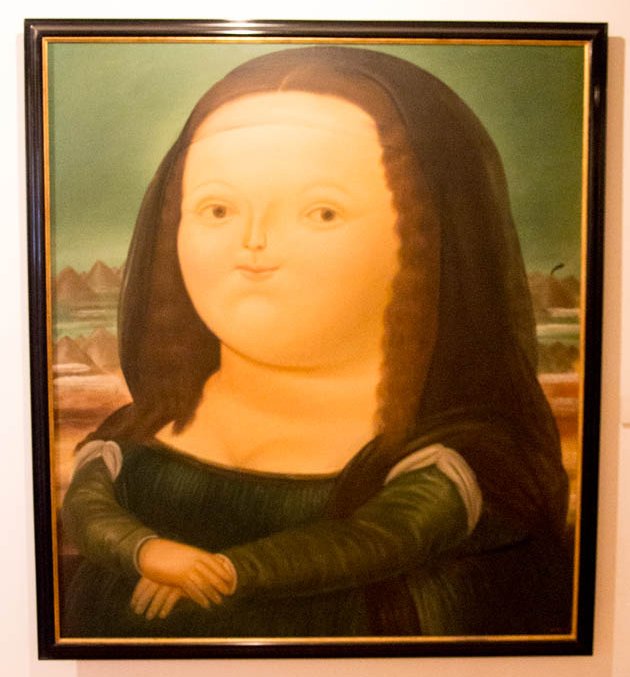 Colombia is in mourning. It has been since April 17th.
That’s the day this country’s most famous citizen, described by the
president as “the greatest Colombian who ever lived,” passed away.
As all true book-aficionados surely know, I am referring to Nobel
Prize-winning author Gabriel Garcia Marquez. His books dominate
every bookstore window, he features prominently on the country’s
primary
website,
and visitors line up in front of the Gabriel Garcia Marquez
Cultural Center in Bogotá.
Colombia is in mourning. It has been since April 17th.
That’s the day this country’s most famous citizen, described by the
president as “the greatest Colombian who ever lived,” passed away.
As all true book-aficionados surely know, I am referring to Nobel
Prize-winning author Gabriel Garcia Marquez. His books dominate
every bookstore window, he features prominently on the country’s
primary
website,
and visitors line up in front of the Gabriel Garcia Marquez
Cultural Center in Bogotá.
Unfortunately, that only leaves second place for Fernando Botero,
painter and sculptor. When we were in Bogotá, we visited the
Botero Museum. I was pleasantly surprised. Botero’s paintings and
sculptures depict people, animals, and even objects, that are very
fat, and in an odd way.
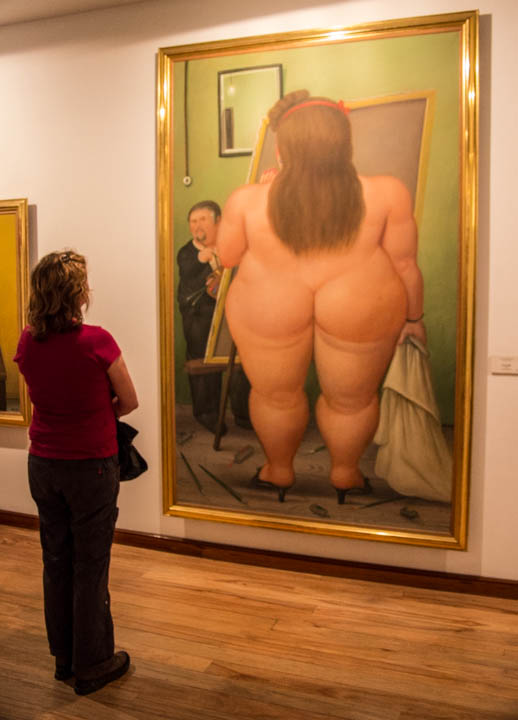 I found his work to be of a cheerful nature,
without the political commentary that characterizes Garcia Marquez’
work. One of his paintings, that had me chuckling, shows an obese Mona
Lisa, and I was highly amused by his bronze sculpture of a ridiculously
fat horse.
I found his work to be of a cheerful nature,
without the political commentary that characterizes Garcia Marquez’
work. One of his paintings, that had me chuckling, shows an obese Mona
Lisa, and I was highly amused by his bronze sculpture of a ridiculously
fat horse.
“They are not fat,” Leidy said to me a few days later, in a strict
tone of voice. Eric and I were in Medellín, taking a week of
Spanish lessons, and Leidy was my teacher. A large part of my course
consisted of conversación, and I was amazed by the
variety of topics that Leidy came up with.
 For the past ten minutes I
had been struggling to express my thoughts on Botero’s work in Spanish,
and I was pleased with myself for recalling the word gordo, or
fat. Apparently, the teacher was not impressed.
For the past ten minutes I
had been struggling to express my thoughts on Botero’s work in Spanish,
and I was pleased with myself for recalling the word gordo, or
fat. Apparently, the teacher was not impressed.
“It’s a baby’s perspective,” Leidy continued. She told me that when
Botero had his first child, he became fascinated with a baby’s
perspective on the world. He thought that adult brains compensate for
this, but that babies see their parents as having very wide, flat faces,
with the eyes far apart; according to Leidy, that’s what he was trying
to illustrate.
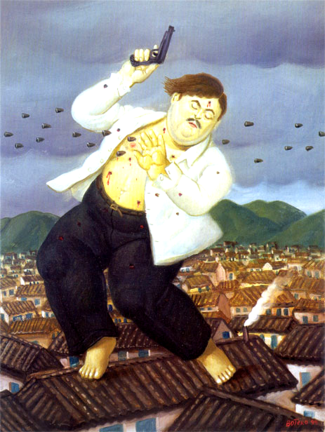 “They’re not fat,” I read in a pamphlet the next day. As Leidy had
suggested, we were visiting the Museum of Antioquia, in downtown
Medellín. Botero is originally from this city, and he donated a
large number of his works to the museum. “They’re voluminous,” the
text read, “and this makes them sensual.”
“They’re not fat,” I read in a pamphlet the next day. As Leidy had
suggested, we were visiting the Museum of Antioquia, in downtown
Medellín. Botero is originally from this city, and he donated a
large number of his works to the museum. “They’re voluminous,” the
text read, “and this makes them sensual.”
Voluminous for sure, but sensual? I still found his works mainly
cheerful, and judging from the laughter coming from the people posing
with Botero’s statues on the square in front of the museum, I was not
the only one. However, in Medellín I also discovered a more
serious note - including political commentary - in Botero’s art. For
example, it was here that we saw the famous painting “Death of Pablo
Escobar,” which depicts the head of the Medellín drug cartel
riddled with bullet holes. Hardly sensual, but certainly not amusing
either. Neither is the series of paintings on Abu Ghraib.
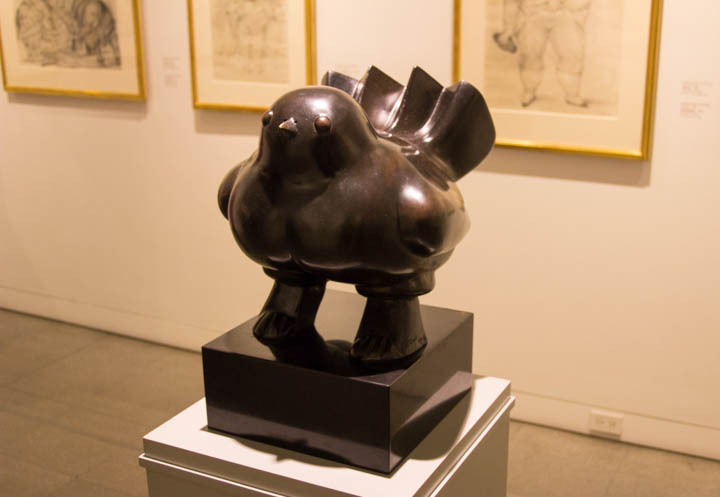 And then there’s the Pajaro de Paz, which shows some of the worst of
what humanity is capable of. As Eric and I stood contemplating Botero’s
statue in Parque San Antonio, I thought back to my
conversación with Leidy, the day before.
And then there’s the Pajaro de Paz, which shows some of the worst of
what humanity is capable of. As Eric and I stood contemplating Botero’s
statue in Parque San Antonio, I thought back to my
conversación with Leidy, the day before.
“Which was your favorite statue in Bogotá?” she had asked me,
and I described a small bird. A cute, fat bird.
Leidy nodded slowly. “The original statue was very large,” she said,
and her face tightened. “Go to Parque San Antonio.” Then she told me
the story of the park.
In 1994, in the midst of the drug wars, the city of Medellín
opened Parque San Antonio in one of its poorer neighborhoods, in an
attempt to improve the locals’ quality of life. To liven up the
rather sad-looking park, which was all pavement and no trees, Botero
donated a large sculpture of a fat bird, the Pajaro de Paz, or Bird
of Peace. One day in 1995, there was a musical event in the park,
and it was filled with people. Then, suddenly, the Pajaro de Paz
exploded. Explosives had been placed in its hollow belly, through
a hole at the bottom.
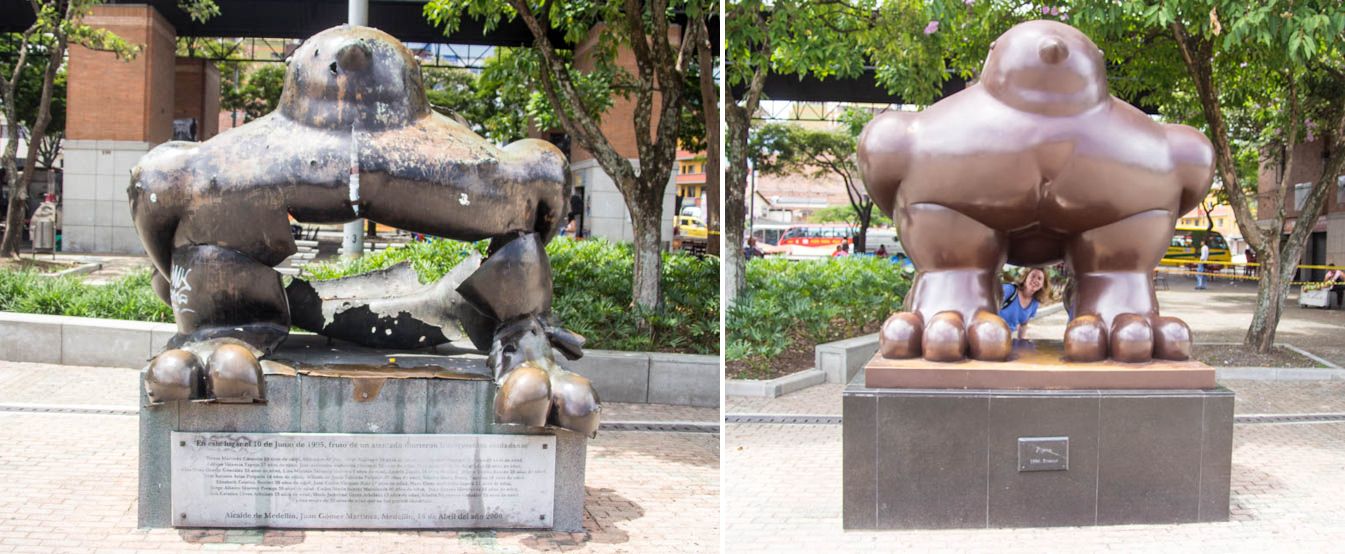 Shards of bronze were ripped off and flung
outward. It was a massacre. Twenty-three innocent people died, the
youngest of whom was a 7-year old child, and many others were
injured. It was probably a FARC bomb; the FARC, although it claims
to be a political party, has close ties with the cocaine industry,
as drug running is one of its major sources of income. They were
probably hurt by the governmental crack-down on drugs in the early
1990’s, and the bomb may have been a form of retaliation.
Shards of bronze were ripped off and flung
outward. It was a massacre. Twenty-three innocent people died, the
youngest of whom was a 7-year old child, and many others were
injured. It was probably a FARC bomb; the FARC, although it claims
to be a political party, has close ties with the cocaine industry,
as drug running is one of its major sources of income. They were
probably hurt by the governmental crack-down on drugs in the early
1990’s, and the bomb may have been a form of retaliation.
In 2000, the city wanted to remove the remnants of the exploded
bird from Parque San Antonio. Botero protested loudly. He requested
that the destroyed Pajaro de Paz be left where it was, as a
memorial to the massacre, and as an “homage to stupidity.” He then
made a copy of the original statue, and had it placed next to the
destroyed one. The destroyed and the new Birds of Peace still
stand next to each other today.
 I know diddly squat about art, but the blown-up Pajaro, the
sculpture of a bird that became a weapon of mass destruction,
truly touched me. And Botero’s reaction to this horrific abuse
of his work of art gives me hope for the future of humanity. The
president may believe that Garcia Marquez is the greatest Colombian
who ever lived, but my vote goes to Botero.
I know diddly squat about art, but the blown-up Pajaro, the
sculpture of a bird that became a weapon of mass destruction,
truly touched me. And Botero’s reaction to this horrific abuse
of his work of art gives me hope for the future of humanity. The
president may believe that Garcia Marquez is the greatest Colombian
who ever lived, but my vote goes to Botero.
Our very first stop on our five-plus month journey around South America
was Bogotá. We spent three days here, to visit the city and plan
our next steps.
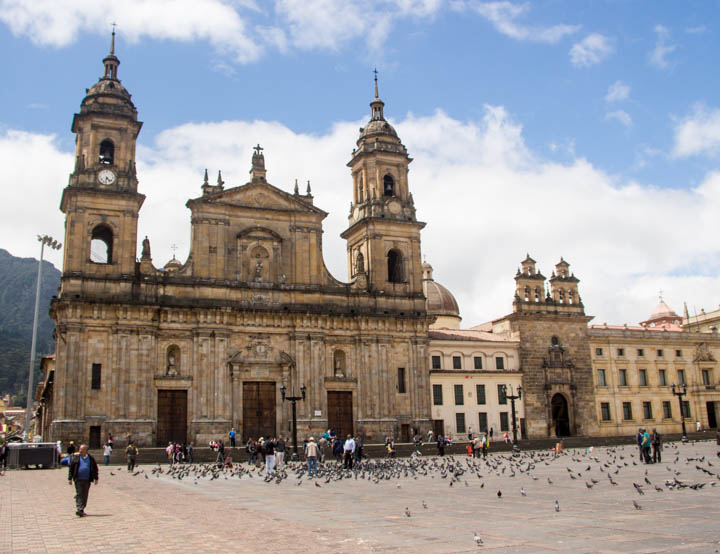
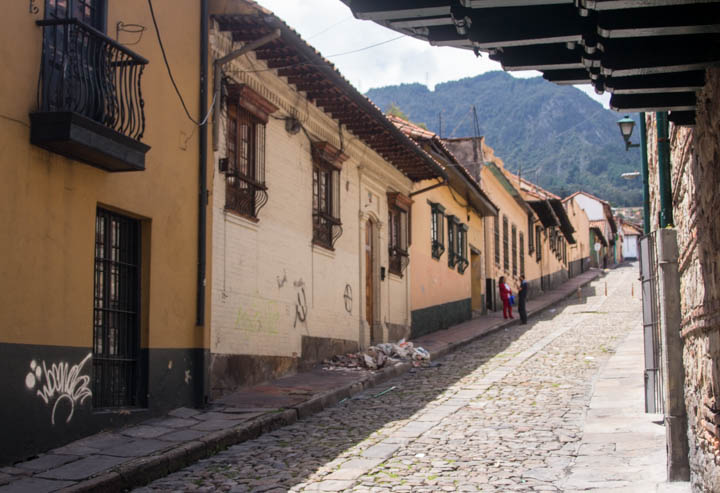 Bogotá has a beautiful colonial city center, and we spent several
hours admiring Plaza De Bolívar and walking the nearby cobblestone
streets. We found out how to score a cheap ($2 - $3), yet good, lunch:
simply pick a restaurant that serves only a set lunch and that has
plenty of customers, and have whatever they’re serving (usually rice,
bean soup, chicken, and a bit of salad).
Bogotá has a beautiful colonial city center, and we spent several
hours admiring Plaza De Bolívar and walking the nearby cobblestone
streets. We found out how to score a cheap ($2 - $3), yet good, lunch:
simply pick a restaurant that serves only a set lunch and that has
plenty of customers, and have whatever they’re serving (usually rice,
bean soup, chicken, and a bit of salad).
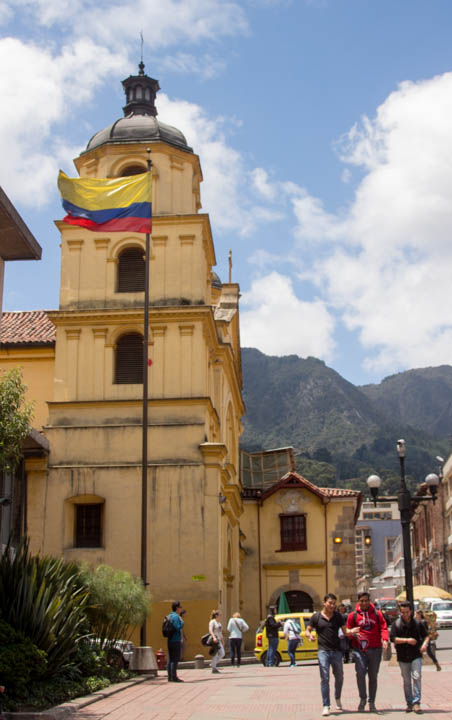 The city center has several museums, most of which we visited. One of
our favorites was Museo Botero, with a large collection of paintings
and sculptures by the Colombian artist Fernando Botero. We had never
heard of him before, but found his works - especially the oddly fat
people and animals - refreshing, unusual, and amusing.
The city center has several museums, most of which we visited. One of
our favorites was Museo Botero, with a large collection of paintings
and sculptures by the Colombian artist Fernando Botero. We had never
heard of him before, but found his works - especially the oddly fat
people and animals - refreshing, unusual, and amusing.
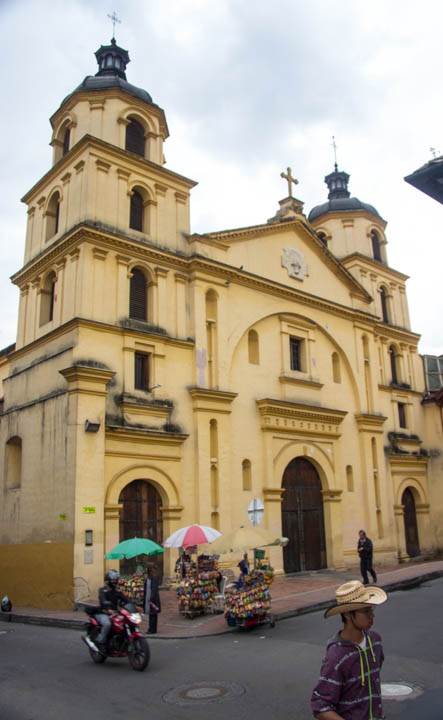 The indigenous peoples that lived here before the Spaniards came were
experts at working with gold. The Spaniards stole as much of this
gold as they could find, and shipped it to Spain. However, any golden
artworks that the Spaniards did not get their hands on are now on
display at the Museo Del Oro. Beautiful decorative pieces and
religious objects give a slight peek into what these peoples’ lives
may have been like, and make this into Colombia’s primary museum.
The indigenous peoples that lived here before the Spaniards came were
experts at working with gold. The Spaniards stole as much of this
gold as they could find, and shipped it to Spain. However, any golden
artworks that the Spaniards did not get their hands on are now on
display at the Museo Del Oro. Beautiful decorative pieces and
religious objects give a slight peek into what these peoples’ lives
may have been like, and make this into Colombia’s primary museum.
Bogotá is also Colombia’s capital city, and this is where the
country’s elite work and play. We visited the wealthy Zona Rosa
neighborhood, where Dolce & Gabbana and Swarovski cater to the rich
and famous, and beer is sold at European prices.
May 10: arrival in Bogotá, on an Air France jet from Paris, France.
May 14: departure by Avianca Airlines to Medellín, Colombia.
“I’ll wait for you right here!”
“Okay, be right back.” I nodded at Eric and headed over to the other side
of the lobby. My spirits were high. For the past hour we had walked the
cobblestone streets of the colonial center of Bogotá, and now we
were at the Botero Museum. I was eager to learn more about Colombian
culture. All I needed was a quick pit stop before immersing myself in the
works of one of this country’s most famous artists, sculptor and
painter Fernando Botero.
I opened the door to the women’s bathroom and stopped smack on the
threshold. A crowd of young schoolgirls filled the entire area between the
stalls and the sinks. Doors slammed open and shut, the paper towel dispensers
clattered loudly, and laughter echoed off the tiled walls. I hesitated,
tempted to backtrack and wait outside, when one of the girls looked over
and saw me. She nudged her friends, and a wave rippled through the room.
Within seconds, the entire group fell silent and twenty girls in white
uniform shirts and dark green skirts stood staring up at me, their eyes
wide. Then one of the smaller girls lifted her hand and gave a tiny, shy
wave. Touched by the gesture, I smiled and waved back, and the spell was
broken. The girls laughed cheerfully, faucets spewed water and white noise,
and some of the girls started to push by me on their way out.
A few minutes later I walked out of the empty bathroom, shaking droplets of
water off my hands. I entered the lobby and stopped dead once more. Eric
stood with his back against a wall, a throng of perhaps thirty schoolchildren
crowding around him in a semi-circle. He looked over at me, an amused look
on his face, and a burst of laughter escaped from my mouth. The boys and girls
in uniform turned around, saw me, and separated slightly so I could walk over
to Eric; the narrow aisle closed behind me as the children drew back in. Some
of the older ones had been bombarding Eric with questions, and now I also became
part of their game. They wanted to know where we were from, whether it was cold
there, what language we spoke. What kind of work we did and whether we had a
car. With the World Cup a few weeks away, most conversations in South America
tend to head toward soccer, and it didn’t take long for the children to bring it
up. They all knew that “Holanda” is one of the participants, and they asked us
whether we thought the Netherlands might win. Naturally, we insisted that
Colombia is going to be champion. The entire conversation was in Spanish. One
of the older boys had an iPad, and whenever the conversation stranded on a word
we didn’t understand, he looked it up on Google Translate and proudly showed
it to us.
All this time, the children’s teacher stood toward the back of the lobby,
halfway up a staircase. When I joined Eric, he placed his hands on the banister
and watched, chuckling softly. However, after the children had been firing
questions at us for about ten minutes, he called out something in Spanish.
The children at the rear of the crowd turned toward the staircase, but some of
those nearest to us whipped out cell phones and started to take photos of us.
One of the girls handed her cell phone to a friend and then boldly posed next to
us while her friend took a picture. I’m sure anyone can guess what happened next:
we got to pose with another twenty girls and boys, one by one or in pairs, as
their friends took pictures, loud laughter ringing out in the lobby.
Finally the teacher started to climb the second half of the staircase, and he
called the children over. Waving cheerfully at us, all of them speaking
simultaneously in Spanish, the children retreated to the staircase and followed
him to the second floor. Eric and I grinned widely at each other. We had, after
all, come to the museum for some Colombian culture.
Bogotá is a huge city, with 7 million inhabitants living along
a 40-kilometer north-south sprawl. Getting around the city in a car
is trying, to say the least. The lines on the pavement are no more
than rough guidelines, and size determines right of way. The major
roads in the city are an endless, black smoke-belching traffic
stand-still, and the smaller streets are a craze of pedestrians
dodging tiny yellow cabs that come screeching around corners.
Luckily, there is an alternative: the TransMilenio bus system.
On our second morning in Colombia, Eric and I walked cheerfully to
the nearest TransMilenio bus station. Eric asked for two tickets to
the center of Bogotá and the cashier passed him a single
plastic card.
“Dos,” Eric said, and he held up two fingers.
The cashier chattered in rapid Spanish, which we did not understand.
“Dos,” Eric repeated, unsure of what to do.
The cashier muttered something and waved us off, turning to next
customer. Huh. We stepped aside and were wondering what to do when
the woman who had been in line behind us came over. She said
something in which I recognized the word ajuda, or help, and
gave us a friendly smile. She appeared to be about fifty, and wore
beige pants and an old-fashioned pink sweater. Her hair, bleached
blonde, fell down to her shoulders. She held out her own plastic
card and started to make a series of movements with it. Speaking
rapidly, she repeated the motions a few more times, then asked us
whether we understood.
Eric and I looked at each other and shook our heads. “No
comprendo,” I mumbled, and Eric held up our card and threw in
another “dos” for good measure.
Looking resigned, the woman nodded and gestured for us to follow her.
We walked to the curb of Avenida Caracas and waited for the
pedestrian light to turn green. The bus platform sits at the center
of this eight-lane traffic aorta. Cars use the two outer lanes, on
both sides; the four inner lanes are for the TransMilenio buses, with
two lanes in each direction. The long, tiled platform is raised one
meter above street level, and encased in glass. We watched some buses
blow by the station at high speed in the outer bus lanes, while others
slowed down in the inner lanes. These pulled over at designated spots
along the platform, after which sliding glass doors opened, allowing
passengers to get on and off.
A row of turnstiles blocked our entry to the platform. Ducking in
front of Eric, the woman pointed at his card and then slapped a
sensor pad with her hand. Eric held his card over the sensor, a light
turned green, and he pushed forward. Reaching back over the turnstile,
he gave me the card. However, nothing happened when I held it over
the sensor. “No,” the woman said, followed by a lot of Spanish, and
she pointed at a slot in the front of the turnstile. I pushed the card
into the slot and - bingo! - the light turned green again. I gave the
woman a grateful smile. We would never have figured that out
on our own.
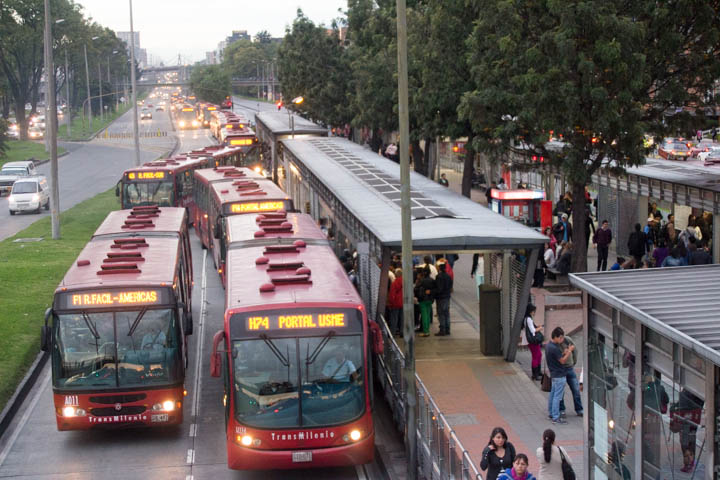 Our new friend asked us where we were going, and we named a station in
downtown Bogotá, close to where the museums are. She jogged
over to a large board that showed about thirty bus lines, jabbed her
finger at one, glanced around, and strode rapidly over to a pair of
glass doors where a bus was just pulling up. We followed her. The
platform doors slid open and the woman pushed her way in, fighting
the flow of passengers trying to get off, gesturing urgently for us
to stay with her. Gasping, I clutched the greasy metal bar over my
head as the bus pulled away from the platform in a violent jerk, and
I strained not to fall as the bus swung to the right. My elbow and
Eric’s backpack grazed a few faces and I mumbled apologies at the
people around us, all of whom were at least a head shorter than me.
Their friendly nods and smiles assured me that there were no hard
feelings.
Our new friend asked us where we were going, and we named a station in
downtown Bogotá, close to where the museums are. She jogged
over to a large board that showed about thirty bus lines, jabbed her
finger at one, glanced around, and strode rapidly over to a pair of
glass doors where a bus was just pulling up. We followed her. The
platform doors slid open and the woman pushed her way in, fighting
the flow of passengers trying to get off, gesturing urgently for us
to stay with her. Gasping, I clutched the greasy metal bar over my
head as the bus pulled away from the platform in a violent jerk, and
I strained not to fall as the bus swung to the right. My elbow and
Eric’s backpack grazed a few faces and I mumbled apologies at the
people around us, all of whom were at least a head shorter than me.
Their friendly nods and smiles assured me that there were no hard
feelings.
The bus settled into a constant speed and I turned to our friend,
thanking her profusely for her help.
“Are you also going downtown?” I asked.
She shook her head and explained that she was on her way to the
airport to deliver a package, and she’d be getting off the bus at
an earlier stop. She worked for Cisco as an engineer. We started a
halting conversation, limited only by my Spanish. On closer
inspection, the woman appeared to be around forty; her austere
clothing and old-fashioned glasses had made her seem older.
“Don’t trust anyone,” she muttered, glancing around. “Colombia is a
beautiful country, but the people…” She shook her head, frowning.
I raised one eyebrow, ready to defend a country I had yet to get to
know. “From what I heard, Colombians are very nice,” I said.
“Sure. Most are. But there are always opportunists.”
“There are opportunists in every country,” I countered.
“Isn’t that the truth,” she said, and sighed. “So don’t trust
anyone.”
Obviously the irony in what she said, after having approached us on
the street, was lost on her. We spoke about the museums in
Bogotá, and when her bus stop approached she admonished me
once more not to trust anyone.
“Where is your passport?” she asked.
“In the hotel, in a safe,” I answered.
“Good.” She nodded approvingly. “Don’t take a camera with you,
either.” She whipped out her cell phone and started to type a text
message. Frowning at her phone, she mumbled, “Don’t even take a
cell phone. It’ll get stolen.” The doors of the bus opened, and
she looked over her shoulder, directly at me. “God bless you,” she
said in English. Then she looked intently at Eric. “God bless
you,” she repeated. She gave a quick wave and hopped off the bus.
The bus pulled away from the platform with a roar. Even though we
clung to the overhead bars, we were flung hard into our neighbors,
yet the only looks we received were of friendly, open curiosity.
I’m sure there are opportunists in Colombia, as well as everywhere
else. But as long as there are guardian angels out there like our
personal TransMilenio guide, I’m sure we’ll be fine.
 Colombia. That country somewhere in South America. Their most popular
export product is coffee… or is it cocaine? In the press, Colombia has
been largely defined by druglords, cocaine cartels, and cocaine wars.
And then there’s the guerrillas whose disruptive actions have been
tearing up the country for decades, the FARC proudly in the lead. For
as long as I can remember, the Netherlands’ ministry of foreign affairs
has been telling Dutch citizens to give Colombia a wide berth, to keep
from getting kidnapped by the FARC or caught in the crossfire of a
cartel shootout, or from simply disappearing in the jungle. Gotta go
see that place, right? Let’s go to Colombia?
Colombia. That country somewhere in South America. Their most popular
export product is coffee… or is it cocaine? In the press, Colombia has
been largely defined by druglords, cocaine cartels, and cocaine wars.
And then there’s the guerrillas whose disruptive actions have been
tearing up the country for decades, the FARC proudly in the lead. For
as long as I can remember, the Netherlands’ ministry of foreign affairs
has been telling Dutch citizens to give Colombia a wide berth, to keep
from getting kidnapped by the FARC or caught in the crossfire of a
cartel shootout, or from simply disappearing in the jungle. Gotta go
see that place, right? Let’s go to Colombia?
My interest in Colombia was first aroused in 2009, when I spoke to
several people who were on multi-month journeys in South America.
They were all insanely positive about Colombia, the new cool, up and
coming. A new president had doubled the police and military forces,
and several major drug lords had been chased down and shot. Cuba and
Russia had dropped the FARC as their BFF, and the FARC, without the
cash to buy arms, was retreating into the most distant reaches of the
jungle. Colombia was finally becoming relatively safe, and the first
Western visitors were starting to drop in. Apparently the Colombians
welcomed tourists with open arms. Go there, was the buzz among
seasoned travelers. Go there now, while the country is still pure,
while they still love us. Go there before Starbucks and McDonalds
take over the colonial town centers, before tourists become walking
wallets, before resentment sets in.
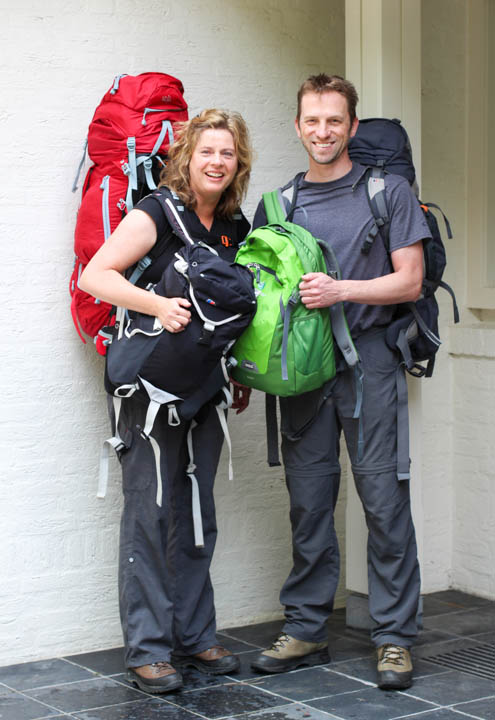 We didn’t act on our fellow travelers’ advice. A three-year stay in
California got in the way of adventurous international travel, and
Colombia was moved to the back burner. A few months ago, when Eric
and I started to make plans for a 6-month stay in South America,
Colombia didn’t even figure in. It’s too hot, we reasoned, and there’s
not a lot to see or do. Shrug. So many countries to visit, we can’t go
everywhere, right? Our friends Yvonne and Robert changed our minds.
They travelled around South America a few years ago, and in various
conversations we had on the topic they kept talking about Colombia.
It’s the pura vida, Robert said, smiling widely. And just like
that we got curious and decided we wanted to go have a look.
We didn’t act on our fellow travelers’ advice. A three-year stay in
California got in the way of adventurous international travel, and
Colombia was moved to the back burner. A few months ago, when Eric
and I started to make plans for a 6-month stay in South America,
Colombia didn’t even figure in. It’s too hot, we reasoned, and there’s
not a lot to see or do. Shrug. So many countries to visit, we can’t go
everywhere, right? Our friends Yvonne and Robert changed our minds.
They travelled around South America a few years ago, and in various
conversations we had on the topic they kept talking about Colombia.
It’s the pura vida, Robert said, smiling widely. And just like
that we got curious and decided we wanted to go have a look.
Now, several weeks later, our plane descends toward the Colombian
capital of Bogotá, and I gaze out of the window at grey
nothingness. Images of California and the Netherlands dance tirelessly
across the thick cloud cover. We moved away from California, spent
one week in the Netherlands, and are now starting a
five-and-a-half-month trip around South America; I can barely wrap
my head around all of this. We’ve got over five months of backpacking
ahead of us, in which we’ll be living out of the 25 kilograms of luggage
that we have between the two of us. Five months without a familiar face,
with strange food and foreign languages.
 Suddenly the plane dips below the clouds, and a mountainous landscape
in a million shades of green dispels my troubled thoughts. Steep
forested peaks surround a fertile valley of fields and greenhouses,
and a sprawling city glimmers in the distance. Colombia. Let’s go
check it out!
Suddenly the plane dips below the clouds, and a mountainous landscape
in a million shades of green dispels my troubled thoughts. Steep
forested peaks surround a fertile valley of fields and greenhouses,
and a sprawling city glimmers in the distance. Colombia. Let’s go
check it out!